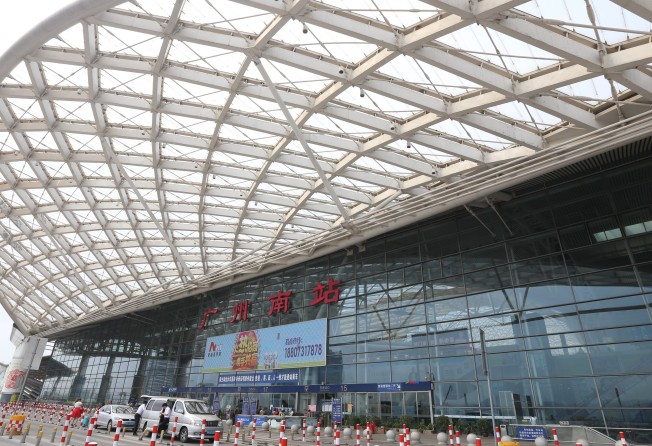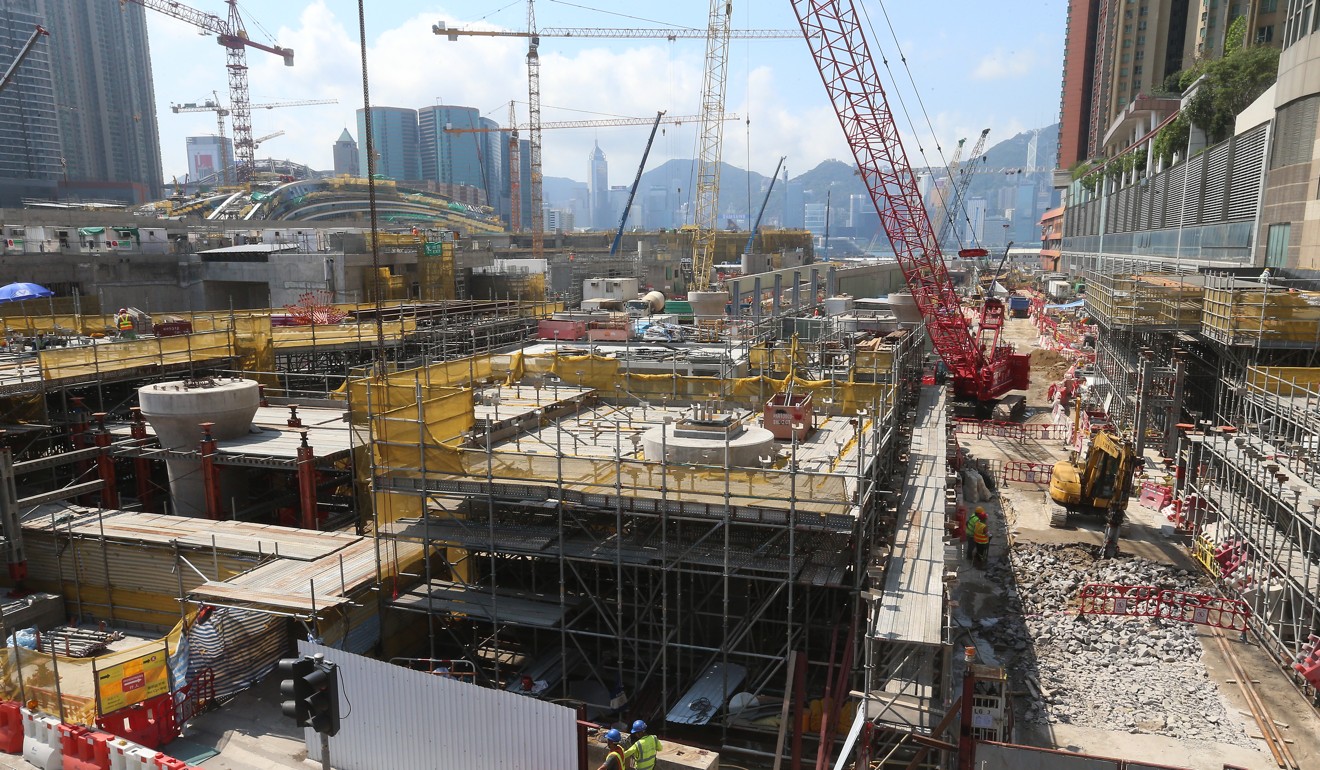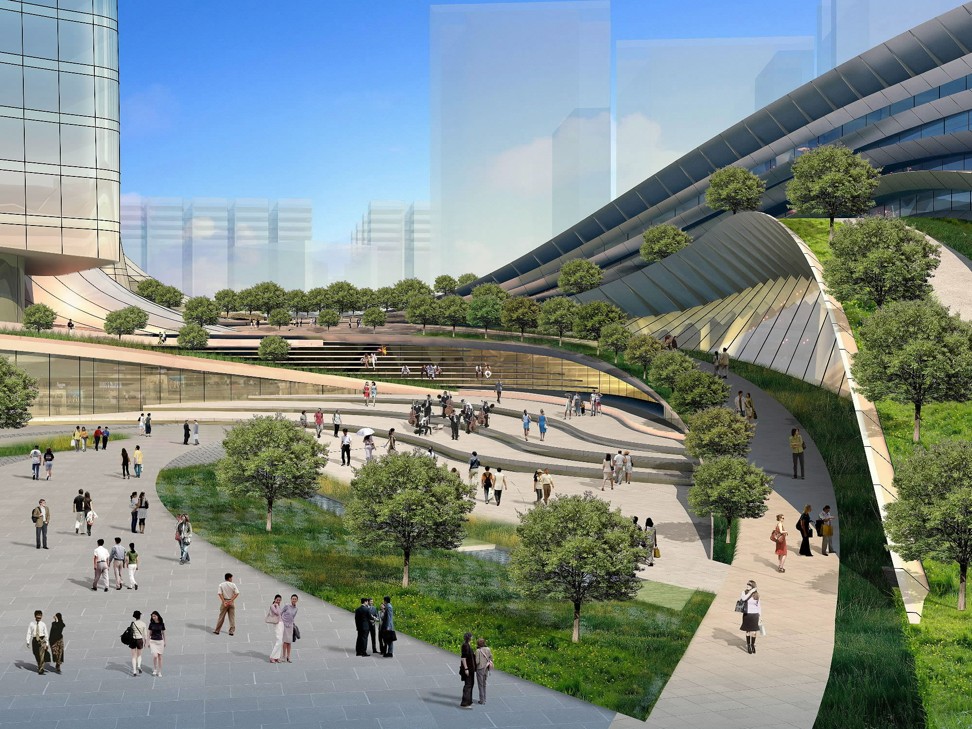Express rail link joint checkpoint at West Kowloon is the efficient choice for travellers
Bernard Chan says fears over mainland officials exercising their powers at a joint checkpoint are exaggerated, as all such a set-up will bring is fast and convenient travel for cross-border passengers

The express railway linking West Kowloon with Shenzhen and Guangzhou has hit various problems since construction began in 2010. These include the eviction of residents from rural sites, technical difficulties and cost overruns.
The project undoubtedly brings major potential benefits. For example, getting to Guangdong and a range of adjoining regions beyond the Pearl River Delta will become far easier and quicker, opening up new economic and lifestyle options for Hong Kong people.
However, one pressing problem remains: the location of the mainland immigration and other border control facilities. With Hong Kong’s current administration now in its final weeks, this will be a top priority for Carrie Lam Cheng Yuet-ngor after she is sworn in as chief executive on July 1.
One option – favoured by the government – is setting up mainland as well as Hong Kong checkpoints at the rail link’s West Kowloon terminus. Critics are strongly opposed. Obviously, there are complicated legal aspects. However, officials are confident that the legal technicalities can be resolved.

The basic fear of the opponents of checkpoint co-location relates to the principle of mainland officers exercising their powers at the terminus. Critics say this sets a dangerous precedent that could infringe upon local jurisdiction. The implication is that this could threaten the rights and freedoms of Hong Kong people.
I think the main problem here is one of perception. Co-location is easily the most practical way for travellers to clear boundary checks on the new system. The principle is already in use here. When you enter Hong Kong at the Shenzhen Bay checkpoint, you are still physically on the mainland even after passing through Hong Kong immigration and customs.
By enabling travellers to get through both sides’ checks at the point of departure, the rest of the journey is a domestic one
A similar sort of approach is used internationally, for example with US pre-clearance at airports in Canada, or passengers on cross-channel trains between the UK and France. This is efficient in terms of terminus space and travel time. By enabling travellers to get through both sides’ checks at the point of departure, the rest of the journey is a domestic one – not limited to destinations with immigration facilities.
Perhaps it is misleading to say that mainland officials would be operating “in” Hong Kong. In effect, the boundary – and mainland jurisdiction – would extend to a specific part of the departures hall in the West Kowloon terminus. The trains (running underground all the way to Shenzhen) would also in effect be on the mainland and in mainland jurisdiction. It is easy to make this sound shocking or alarming. One opposition politician called it “ceding Hong Kong territory”. You could see it as a redrawing of the boundary – under the ground – specifically for passengers travelling between Hong Kong and the mainland on the new rail link.

But does this actually infringe upon Hong Kong’s autonomy or threaten Hong Kong people in any way? If you take a train to Lo Wu, go through Hong Kong immigration and walk over the bridge, you will enter mainland jurisdiction and face mainland immigration officials. It may seem strange to go through this procedure in the terminal under West Kowloon – we think of the border as the Shenzhen River, running at ground level on the edge of the New Territories. But there is no meaningful difference between the two.
On the express rail, you cross the border in the terminus at West Kowloon
Depending on the legal details, this might mean that mainland authorities could apprehend a wanted person when he enters their zone at the West Kowloon terminus. But the same thing would happen if you went over the bridge at Lo Wu, or took a plane to Beijing. To be blunt, if you are wanted by the authorities, you wouldn’t try to pass a mainland immigration checkpoint wherever it is.
It is all about perceptions. It may seem strange if you think that south of the Shenzhen River means you are on the “Hong Kong side”. But it makes more sense if you look at it a different way: that, on the express rail, you cross the border in the terminus at West Kowloon.
I appreciate that the legal details are probably complex. But we should not let our perceptions exaggerate fears about the basic principle involved.
Co-location would simply deliver convenience to travellers, and make no difference in practice to anyone else.
Bernard Chan is a member of the Executive Council